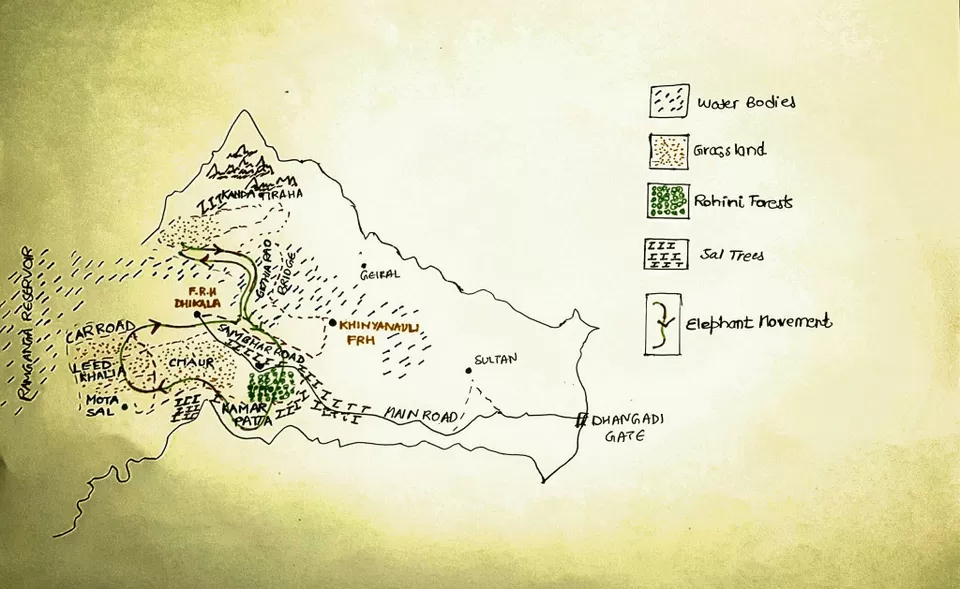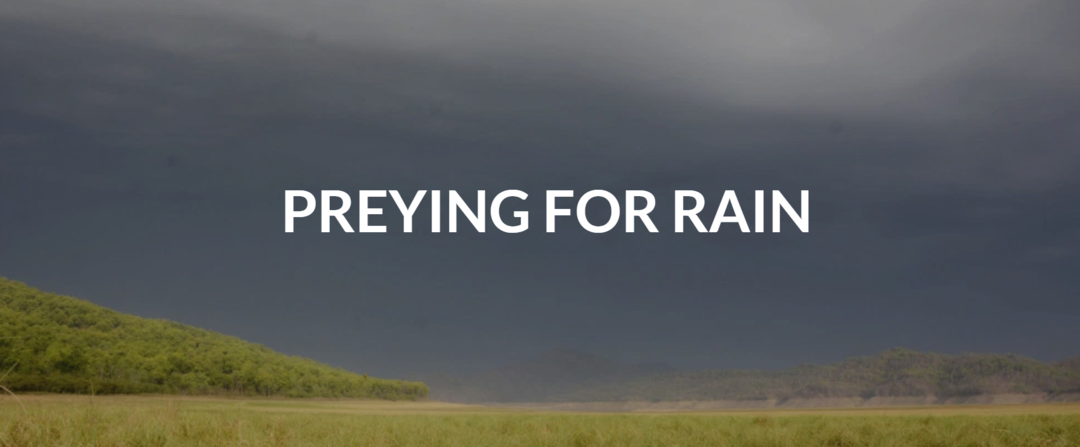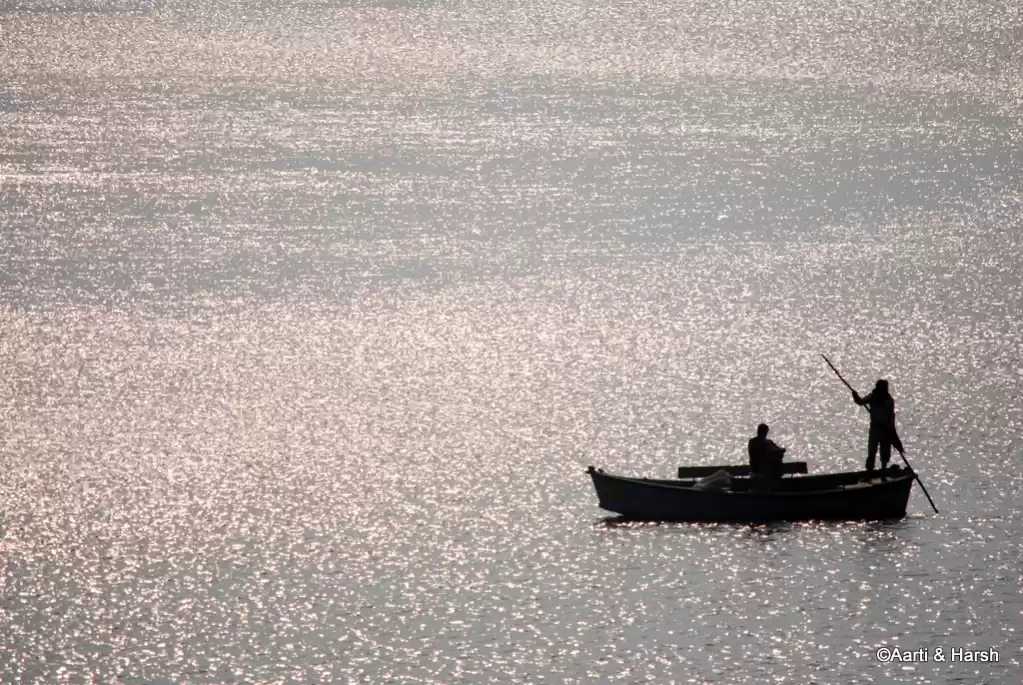A lot can happen over a few safari seasons at the ol' and venerable Jim Corbett National Park, but the rise of tigress Paaro, also known as Paarwali and Nashili, to unexpected prominence, something that put the once drawless grasslands of Paar on everybody's itinerary, is the stuff of legends.
Over the past year, her magnificent sightings have come to guarantee that every morning come 3 a.m., each available Gypsy is revving it's engine to scramble, as expectant tourists and photographers decry their drivers towards the edge of the 30 Km/h inner-park speed limit to catch the new-crowned queen on the prowl.
Most mornings get so chaotic that drivers have to argue among themselves who gets to take the quicker route to Paar, the Main Road, which is actually longer, as the crow flies, than only alternative, Sambhar Road, unpreferable on account of being frequently beset by road blocks of the titanic variety. No, we're not talking about gridlocks caused errant Gypsies backing into one another but something that often finds itself playing second fiddle to that other, most perennial draw of the park, what we're talking about is herds and herds of the magnificent Elephas Maximus Indicus - or Elephants.

Every year between February and March, herds of elephants migrate to national parks to meet their nutrition requirements and to find fresh water. The lush green forests provide them with shelter from the sweltering sun and the unforgiving heat of the Indian summer. Corbett National Park is one such refuge, and every year it hosts a large number of elephant herds .
There are some, however, who would make a destination of the journey itself, and I had plans... Having observed the migrations from their home in Rajaji National Park some two hundred kilometers away, and in conversation with my drivers and guides, I finally understood the movements of these herds. Usually the elephants would feed in the vast Chaur - the Dhikala grasslands or in the Paar itself. In the morning, the herds would proceed from the Paar to the Chaur before crossing the river and entering the grasslands. A recent addition to the Sambhar Road allowed us to finally get close enough to observe the elephants crossing the Ram Ganga and the bedlam that ensues in the process.

Parched from their long trek, the herds, after a quick sniff of the land to get the beat on their surroundings, rush down the slope into the river at breakneck speed, appearing as some kind of bobble-headed giants stirring up a small fog of dust in their wake, the young ones slipping and sliding down the sand until they hit the gushing waters.Water at Last

To the viewers in the Gypsies, this amazing spectacle is a silent affair, as the elephants are too distant to hear (thank God for our 70-300s!), and the only sound that drifts towards us is the murmur of the Ram Ganga, on it's quiet path from the Dudhatoli range in Pauri to distant, grey industrial towns of Moradabad, Bareilly and Shahjahanpur where no twilight farmer or dhobi, miserable in his work, would ever believe he was sharing a current with titans in frolic. Here they bathed, rolling in the river and chasing one another in celebration. This was a procedure of accomplishment. They had made it. Not all elephants do.

As the calves ran between the legs of their mothers, I thanked Kaleem bhai, my driver, for his sharp intuition that had brought us here at exactly the right moment to witness such a crossing. The Ram Ganga- a spread of white pebbles shining like ivory on either side of shallow chuckling water with Golden Mahashers swimming with the current, elephants in the foreground, and blue hills, Sal trees in the aft, and an opportune White Rumped Shama seemed to have prepared a song to test on us... It is easy, often, to confuse the gentle skills of nature for the benefits of Paradise. But that it is, to those gentle beasts, and to those that would walk among them.

Crossing the river still left a lot to look forward to, and it was time for the mandatory mud bath! Stomping at the ground, the elephants covered themselves with mud, which protects them from parasites and keeps them cool. Decorated in dirt, they head towards the car track ahead of us, shaking through the 'B haang ' bushes and emerging to cross the road one by one. One paused on his way, kind enough to allow me a full frontal of him taking an extra mud bath! Behind them, another herd arrived at the river and began the same process. Patiently, we waited for each to cross the road. Those jams the drivers were talking about on Sambhar Road, they weren't kidding!

So begins the march to Rohini forest. Around noon, under the blazing sun, Rohini trees remain cool and hospitable. I waited at the 'Palm Tree' watering hole, and could hear the herd leader trumpeting at the little ones, and them squeaking in return. I waited for them to enter the pond, the light was perfect and I knew I was in for something special. Breaking branches and the crushing of young saplings marked the entry of the herd. Already poised, I took a shot to test my settings and checked out the green frame that had formed on my LCD. A perfect frame! Now all I needed was a cast and lo! A hustle in the thickets brought two young calves right in front of me, and the whole herd quickly followed. They were everywhere! They didn't stay long, and headed to the Rohini forest... we could hear them long after they had disappeared, they were going deep inside, further and further towards the Kamar Patta road.

In the afternoon, new herds were seen in the Chaur. Triangular ears flapping, tails swinging, giant skulls dancing with trunks like periscopes, learning whatever they could from the wind. But there was something which was disturbing the herd. Suddenly, one of the mammoths charged at another one! I could hear their hides rubbing, their muscles tightening! The rest of the herd also charged and drove the two elephants away. Elephants are matriarchal, and each herd is led by a mother who holds dominance over the other ladies in the herd. The babies of the herd are particularly vulnerable and need care and attention, so mothers are very active and get together to fight any danger nearby.



But the elephants were everywhere... Thandi Sadak, Car road, and finally a huge herd with a tusker near the Mota Saal and Leed Khalia grasslands. This herd was heading towards the Ram Ganga. The tusker stayed back and the herd soon reached the waters. As the sun hid behind the hills of Uttarakhand, the surface of Ram Ganga turned golden, as if Midas had come and touched it with his hand, the sunset began with the bathing ceremony, and like the Hindu devotees the elephants plunged into the river and the worship began! and with these memories I came back to the Dhikala FRH.

The sky blushed purple, then black and soon the stars took over the once golden sky. Under the starry night, my fellow photographers, sitting on the wooden bench in front of the Dhikala deck told me that I had missed a tiger while I was busy with the elephants. I didn't have any regrets as I was satisfied with my tiger sightings. I used to fear elephants... I remembered the time when I used to see these wild giants and start shivering and hide under the seat of the gypsy. One year ago, in December, when I was waiting for the tigress known only as the Grassland Queen to cross the road, an agitated mother elephant charged at me... But however massive and intimidating these beasts might be, even while charging, they smile! Have you ever observed their unfading smile? I looked up at the stars and spent a long time trying to find an elephant shaped constellation....

The next morning was cloudy and the chances of finding Paaro were slim, so we chose to visit the grasslands again, hoping for a bigger catch. Driving to a crossroad, Kaleem bhai parked our Gypsy and turned off the engine. We waited. When we'd first met, the first thing he'd asked me was ' Aap bhi Paaro ki peeche bhagoge? ' or you would like to explore the forest and photograph elephants and other 'common' animals. Kaleem bhai's instinct was always spot on, throughout the trip all his intuitions were right and he never failed my expectations. His penchant for obtaining us a perfect view without disturbing the wildlife or breaking any of the Forest rules often made me think of how seriously he must take his work, and kindled a sort of respect in me I would have earlier reserved for a latter day Jim Corbett. He studied the behaviour of the nearby Sambhar deer in silence, watching like a tracker for any hints of a tiger's presence. Soon I spied brown hides moving in the tall grass as a herd of elephants moved towards their new feeding grounds. Kaleem bhai, also attracted to the elephants now pointed out the behaviour of one of a bull... who was in courtship with a cow. This pair gave us a few mating shots and soon disappeared in the tall grass!


On Sambhar Road, tourists from a few parked Gypsys discussed two tigers they had heard roaring- the Pangi female and he Sambhar Road male, an elusive and shy tiger! Nobody had seen them, but there was a ray of hope as it was generally expected the tigers would emerge upon sighting the elephant herd, that was moving toward us, but over two hours of waiting produced nothing but a few more roars. Kaleem bhai thought these tigers wouldn't show up as they were shy, but we might miss our chance to see the elephants crossing the river had we stayed another minute more... Rushing to our initial spot and setting up our cameras..... Kaleem bhai was right about both predictions, as usual, and the tigers remained in hiding while the elephants started coming down the Sambhar road to the banks of the Ram Ganga. It seemed that this was the same herd we had seen the previous day, the one-toothed tusker was still hiding and the group was about to cross the river.

Maybe on the parallel road, a tiger was walking on the road giving head-on shots... but sometimes tiger photography makes us blind and we forget there are many other beautiful beasts around us too, a fact painfully obvious only after another photographer pointed it out to me. But this moment was worth it- seeing two juvenile tuskers sparring on the slope, the one toothed tusker washing himself and mothers taking their beloved back home, across the river.

On the Paar side, just before the Gethia Rao bridge, our Gypsys came upon a massive tusker bathing solo. Tuskers are male elephants, and they leave the herd at a very young age to lead very isolated lives. Sometimes, they team up in groups of two and journey together. This one was quite the loner though, but as happy as he could be as he rolled around in the water, showering upon himself and presenting a 'Salaam' with his trunk to all who stopped to see.

Seeing the big fellow enjoy himself in the water and smiling to himself, I was suddenly struck with the fragility of this vast glory around me. Although I was steeped in the very bosom of nature, without the merest industrial or urban monstrosity in sight, I wondered how long it would be until the rest of the world caught up to this place. Already beset by poachers and illegal logging sites, how long can Corbett stand as one of the last remaining vestiges of the ancient wilderness that man himself crawled out of?
Would you bow your head, as Sir Kipling would ask of you, to the giants that created these forests? Perhaps the tender mothers and rowdy gents, that make up the Elephas Maximus ,stuck in a relentless cycle of persecution, would like to see it.
"They drew the jungle out of the deep waters with their trunk; Where they made furrows with their tusks, there the rivers ran; Where they struck with their feet, there rose ponds of good water. And when they blew through their trunk thus the trees fell. That was the manner in which the jungle was made." - The Jungle Book

This blog was originally published on Ali Husain.


























